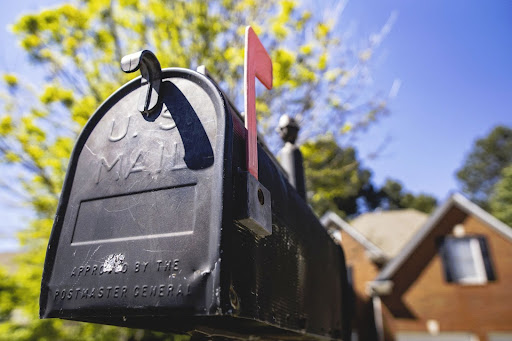Sam Makad
Sam Makad is a business consultant. He helps small & medium enterprises to grow their businesses and overall ROI. You can follow Sam on Twitter, Facebook, and Linkedin.
Foster lasting bonds with donors through strategic communication. Explore diverse approaches to engage on a personal level and build enduring connections.
For nonprofits, cultivating ongoing relationships with donors is more than simply good manners as it's also strategic. Effective communication plays a massive role in creating these connections and sustaining them over the weeks, months and years.
In this context, it's essential to select the right method of communication that not only reaches your audience but also resonates with them on a personal level. So, without further ado, let's talk through a multitude of approaches to use and why each strategy matters.
You might be surprised how much there is to learn about the back and forth between good causes and the individuals that support them!

Email campaigns allow nonprofits to connect with their donors regularly and reasonably inexpensively. They offer great flexibility in terms of content, design, and scheduling:
The key is not just to ask for money constantly through these email communications but rather to build relationships and engage in meaningful conversations. After all, being respectful of your donor's inbox while also keeping them interested can go a long way in building long-term connections.
Despite the digital age, direct mail still holds a special place in communication. It has charm and provides a tangible connection that emails or social media posts may not deliver. In fact, studies show that the majority of recipients will seek to engage with your organization on other platforms after receiving physical mail. Here are some reasons why it remains effective:
Though it costs more than email campaigns due to printing and postage, the investment could yield a greater return by echoing authenticity and creating deeper emotional bonds with donors.

Through platforms like Facebook, Instagram, and X, nonprofits have another avenue to connect with their donors casually yet effectively, in much the same way businesses can leverage social media. Here are a few reasons why it stands out:
Using these platforms also offers invaluable insights into donors' interests based on the kind of posts they engage with. This knowledge can help tailor future communication strategies for better engagement.
In a fast-paced world, text messages offer another direct and quick way to communicate. Let's look at why this can be a viable communication method:
Better yet, you can automate your nonprofit marketing efforts by creating automated texts for common interactions, which is an efficient solution that saves time and resources. They could range from thank-you messages after donations to gentle reminders about upcoming events or campaigns.
The only thing to remember here is that you should always respect your donor's privacy by seeking prior consent before communicating via text.

The human touch is essential when keeping donors in the loop, and phone calls still wield this power like few other methods of communication. Here are some reasons why:
These calls are about rejuvenating relationships rather than asking for more funds directly. Consequently, such efforts can potentially lead to increased long-term donor retention. And even cold calling still has a place in your toolkit, so don't dismiss it as an option!
In the era of virtual engagement, webinars and online meetups offer nonprofits a fresh way to interact with donors. Here are reasons supporting their effectiveness:
Ensure the technology used is user-friendly. Prioritize making it easy for every participant. Making it easy for every participant should be the priority. These gatherings may also serve as perfect venues for expressing gratitude towards your audience for their ongoing support, so following best practices is wise.

Holding annual events or appreciation dinners provides both an effective means of communication and a valuable opportunity to form stronger bonds with your donors. Consider the benefits:
Maintaining regular contact throughout the year will ensure that these events do not morph into overt donation-seeking platforms but remain genuine gestures of thanks. This careful balancing act is key in sustaining donor relationships.
Consistent communication is one of the pillars of strengthening donor relationships. Newsletters can be a great tool to maintain this consistency. Here's why:
Aim to keep newsletters informative above all else. A well-crafted newsletter builds anticipation among donors about your organization's work, piquing interest, fostering connection, and ultimately inspiring ongoing support.
Surveys are not only an excellent tool for gathering valuable donor feedback but also a subtle way of keeping communication lines open. You just need to ask the right questions. Here's why surveys can benefit you:
The goal is to make them feel that their opinion matters. While this may mean more work in terms of analyzing responses and potentially making changes based on feedback, it could result in stronger relationships with donors over time.
Once nonprofits have identified which communication strategies resonate best with their donors, they can start implementing them in their outreach efforts. It's all about testing different methods, gauging donor responses, and refining the approach accordingly.
Whichever combination you pick, make sure to use each consistently and refine your tactics over time so that you are not only bringing prospects on board but keeping them loyal to your good cause indefinitely.
You’ll also receive some of our best posts today

Sam Makad is a business consultant. He helps small & medium enterprises to grow their businesses and overall ROI. You can follow Sam on Twitter, Facebook, and Linkedin.
The global online education sector is estimated to be...
The world has been moving towards a more remote...

User reviews are a game-changer for e-commerce. Consumers rely heavily o...
Don’t miss the new articles!